Sue and I missed out on several cruises over the past two years because of the COVID-19 pandemic, and when the opportunity to take a cruise aboard the most recent addition to P&O’s fleet – MV Iona – at a very reasonable price, we decided to book it.
Everything was going well until the Omicron variant of the coronavirus appeared, but as the number of infected people began to rise quite rapidly, we began to wonder if the cruise was going to go ahead. Every time that the government made an announcement about the number of daily infections that had been recorded and what measures they were going to take – or might take at some point – our concerns increased.
We were also following the cruise industry news with great interest, and when we began to read about the number of outbreaks that had occurred aboard cruise ships since the beginning of December, we became convinced that this cruise would be cancelled at the last minute.
Because of this anxiety, we did not fill out the Health Declaration required by P&O, acquire the NHS-issued proof of vaccination paperwork, complete the COVID-19 Passenger Locator Forms, buy the 2-day PCR tests we would need when we returned, and begin the pre-packing preparation until New Year’s Eve … just in case the cruise was cancelled.
On 1st January we received an email from P&O reminding us that we needed to complete all of the above paperwork etc., before arriving at Southampton on Monday 3rd January, and we began the final preparations for going on the cruise (i.e. getting stuff ready to pack and packing it) in earnest.
Monday, 3rd January: Southampton
Sue and I set the alarm for 6.00am, and by 8.00am we were on our way to Southampton. There was far less traffic than we had expected, and by 9.35am we had driven around the M25 and along the M3 as far as Winchester Services. We stopped there for a comfort break and a snack breakfast and reached Dock Gate 20 of Southampton Docks by 10.30am. From there we drove through the docks to the COVID testing facility near the Mayflower Terminal. Because we were early – the facility did not open until 11.00am – we were asked to queue nearby.
The facility opened as promised, but queue we were in was bypassed by quite a number of cars that ignored the directions given by the staff. This led to a degree of ill feeling on the part of several drivers who had been waiting longer than us, but the situation was resolved by the staff inside the facility’s car marshalling area, who diverted the queue jumpers into a separate part of the area …and kept them there until we had passed through the testing area.
Once we had completed our lateral flow tests, Sue and I drove out of the docks and along the main road to Dock Gate 6. This is the gate that gives access to the Ocean Cruise Terminal where MV Iona was moored. We had to queue for a short time before our car could be processed and handed over to the valet parking service, at which point we were allowed to unload our luggage and take it to the relevant baggage handling collection point for our deck.
Once that had been done, Sue and I entered the cruise terminal and began the process of being booked in. After answering the same questions as we had already answered online as part of our Health Declaration, we had to sit in a waiting area for the results of our lateral flow tests to be sent to us via a text message. This took about fifteen minutes, and we were then allowed to go to the registration desk for our passports to be checked, our photographs taken, and our boarding cards stamped ‘Priority’ and ‘Safe to Board’.
Because we had booked a suite, we were directed to the Priority Lounge … where we sat until it was time to pass through the security checks. We sat there for over forty-five minutes, by which time the lounge was almost overflowing. When the doors to the part of the terminal where the security checks took place were opened, there was a degree of confusion as to who should go through first. Luckily, we had sat close to the doors, and were amongst the first through … although there seemed to be a bit genteel of pushing and shoving taking place behind us!
Sue and I passed through the security checks without a hitch, and by 1.00pm we were aboard Iona, had registered with the crew at our muster station (the Coral Restaurant, Deck 7 Aft), and had dropped our hand luggage off in our suite.
The suite was suitably well equipped …
… with a large balcony that gave us a panoramic view across the part of Southampton docks that handles vehicle imports and exports.
We then went for a buffet lunch in the Pearl Restaurant (Deck 6 Aft).
After lunch Sue and I went for a walk around the ship and discovered that the section of decks 9 to 15 between the central and aft lifts had been shut off to passengers so that a quarantine area could be created.
By the time we returned to our suite, our luggage had been delivered, and we spent the next hour unpacking. Whilst we were doing this we were visited by our butler – Raj – and cabin steward, Grace. Sue and I then had a bit of a rest before going up to the Horizon Self-Service Restaurant (Deck 16 Aft) for a cup of tea and a cake. On our return to our suite, we spent some time reading before we had to get ready for dinner.
Iona set sail at just after 7.00pm …
… although it was too dark to see must as she moved towards the Solent and the Isle of Wight.
We had booked a table in the Epicurean Restaurant (Deck 17 Forward) for 8.30pm and had a pre-dinner drink in the Crow’s Nest Bar (Deck 17 Forward). We finished our meal at just after 10.10pm, and we went up to the open deck area near the Beachcomber Bar (Deck 18 Forward) for some fresh air. (It is also the main smoking area … and thus somewhere we visited regularly so that Sue could indulge her smoking habit! Incidentally, it is also the best area to find someone to chat to.) Sue and I then returned to our suite via Deck 6 to get ready for bed.
(We had to go down from Deck 18 to Deck 6 so that we could walk aft to the take the lift up to Deck 14, the deck our suite was on. This was necessary because the creation of the quarantine area meant that passengers whose cabins were – like ours – in the aft section of the ship were unable to walk from one end of the ship to the other on Decks 9 to 15 … and Deck 18 was not served by the aft bank of lifts or stairs, which terminated at Deck 16.)
Tuesday, 4th January: At sea
Overnight the weather had begun to worsen, and by the time we got up at 8.00am, Iona was sailing at 16 knots down the English Channel towards Ushant.
The weather was quite rough, and some of the smaller ships that we sailed past were obviously experiencing some difficulties as they ploughed into the heavy seas.
After eating breakfast in the Epicurean Restaurant, Sue and I paid a visit to the Future Cruise Desk (Deck 7 Midships), where we booked a cruise for later in the year. We then went for a walk around the ship’s shops before returning to our suite to read and rest. Sometime after midday we went to find somewhere to get a drink, and after a fruitless search we ended up the Horizon Self Service Restaurant, where we ate a snack lunch. We then went out onto the open deck area on Deck 18 for some fresh air, but soon afterwards the ship passed through a squall, and we went back inside to avoid getting wet.
We went down to Deck 17 to the Crow’s Nest Bar, where we were finally able to have a drink. I briefly returned to our suite to collect our Kindles and discovered that a section of Deck 17 had also been closed off to for a quarantine area.
We stayed in the Crow’s Nest Bar until 3.30pm, at which point we went down to the Horizon Self Service Restaurant for a cup of tea and a scone. Suitably refreshed, we made our way back to our suite, where we sat reading and resting until our butler arrived at 5.00pm. We reported to him that one of the flat screen TVs in our suite was not working properly, and a technician arrived whilst we were getting ready for dinner to fix it.
Sue and I had a pre-dinner drink in the Crow’s Nest Bar before going down to the Pearl Restaurant for dinner. After dinner we went up to the open deck area on Deck 18 for some fresh air before returning to our suite to get ready for bed.
Wednesday 5th January: At sea
Overnight Iona continued to cross the Bay of Biscay, and when we woke up at 8.00am she was approaching Cape Finisterre on the coast of northeast Spain.

Sue and I ate breakfast in the Epicurean Restaurant and then went up to the open deck area on Deck 18. It was quite cold and wet up there, and we only stayed for about fifteen minutes before we returned to our suite. Whilst Sue read, I unpacked my copy of Alan Paull’s LA MARCHA DEL PROGRESSO, a boxed micro wargame that I bought when I last visited Cadiz. It proved to be an interesting game which included a number of coloured dice (white, blue, and orange), six meeples (three blue and three orange) a set of black and white Victory Point markers (small wooden cubes, with the black representing 5 VPs and the white representing 1 VP), two sets (blue and orange) of eight basic action playing cards, as well as scenarios and special playing cards for the Thirty Years War, The Age of Marlborough, The Napoleonic Wars, the First World War, and the Second World War.
This is very much a decision making and resource management game, with the playing cards giving each player a restricted number of things that they can do each turn. The combat system is simple but very effective, and the playing cards held by each player are recycled once all eight in a player’s hand have been discarded. Play ends when one side has reached 18 VPs or both players agree to end it. In the latter case the player who has achieved the most VPs is the winner, and a tie is declared if both players have the same number of VPs.
(I actually bought a copy as a Christmas present for my old friend Tony Hawkins, but on getting home I discovered that the rule and scenario books were both in Spanish, as were the instructions on the playing cards that came with the game. Luckily, I know Alan Paull and he was able to direct me to both an English language copy of the rules and a retailer who had the English version of the game – THE MARCH OF PROGRESS – in stock. I therefore bought a copy of the latter for Tony and kept the Spanish version for myself.)
I spent a couple of hours fighting through the Thirty Years War scenario, and it made me realise how the combination of several apparently simple game mechanisms can produced a very subtle and rewarding game. Like MANOEUVRE, which I was introduced to during the latter part of 2021, I can see myself returning to the game again, especially when I want to entertain a visiting wargaming friend without having to set up terrain etc.
Just after the midday announcement from the bridge, Sue and I went up to the Crow’s Nest Bar to have a drink and to read. We stayed there until a little after 2.00pm, when we made our way to the Horizon Self-Service Restaurant for a snack lunch. On our way there we stopped for a chat with four passengers who were from Liverpool. They wanted to know what the Epicurean restaurant was like, and we were able to enlighten them about the food, the service, and the general ambience.
Once we had eaten lunch, Sue and I went up to the open deck area on Deck 18, where we stayed chatting to other passengers for over thirty minutes. We finally returned to our suite just before 3.45pm, and we stayed there until it was time to go for a pre-dinner drink before the first formal dinner of the cruise.
We had booked a table for two in the Coral Restaurant and went there from the Crow’s Nest Bar via the open deck area on Deck 18. We returned to Deck 18 after dinner and stayed there chatting for some time. We then returned to our suite to watch the news on the TV before getting ready for bed.
Thursday 6th January: At sea
During the night Iona sailed southwards along the coast of Portugal, and when we woke up she was approximately half way between Lisbon the south westernmost point of the country, Cape St Vincent.
As usual, we had breakfast in the Epicurean Restaurant, followed by a brief spell on the open deck area on Deck 18.
On cruises longer than seven days, it is normal for regular cruisers to be invited to a special midday Peninsular Club lunch. This was the day on which Sue and I had been invited, and by 11.45am we were dressed and waiting in the queue outside the Coral Restaurant. The ship’s captain – Captain Robert Camby – was at the entrance but this did not delay us, and by midday we were seated at a table for two in the centre of the restaurant. There were other tables for couples on either side of us, and we were able to converse with them during our meal.
The menu was the same as that for the last Peninsular Club lunch that we had attended, and included the following dishes:
Starters
Crispy Fried Goats Cheese & Prosciutto, with Honey Figs, Vincotto, and Spiced Whole Almonds (Sue)
Chicken and Chickpea Soup, with Brioche Croutons (Me)
Sorbet
Raspberry Sorbet
Main Courses
Poached Loch Duart Salmon Supreme, with English Peas, Chorizo and Tomato Dressing, and Crushed New Potatoes (Sue)
Roasted New Zealand Rack of Lamb, with Crispy Bacon, Onion Potato Cake, Glazed Parsnips, and Lamb Jus (Me)
Desserts
Cheeseboard, with a selection of Regional, British, and Continental Cheese with Biscuits (Sue)
Kaffir Lime Panna Cotta, with Pineapple Compote (Me)
Petit Four
Marzipan Fruits
The lunch ended at 2.00pm, and Sue and I left the restaurant feeling rather full. To stop ourselves just returning to our suite and falling asleep after such a substantial meal, Sue and I went up to the open deck area of Deck 18 for some fresh air. Whilst is was not the best weather we could have hoped for, the previously cloudy grey sky was peppered with small patches of light blue, and it was quite pleasant sitting there for thirty or so minutes.
Sue and I were back in our suite by 3.00pm, and by 4.00pm the sun was shining. We spent the rest of the afternoon in our suite or on our balcony reading and resting … and towards 5.30pm Iona was passed by a huge Evergreen container ship, the Ever Aim
We spent the evening doing the same as we have on the other evenings aboard Iona. We had a pre-dinner drink in the Crow’s Nest Bar, followed by a short spell on Deck 18, then dinner in one of the restaurants (in this case, the Coral Restaurant), ending with another spell on the open deck for some fresh air. We were back in our suite by 10.30pm, and asleep well before midnight.
Friday 7th January: Gibraltar
Unlike our previous visit to Gibraltar in November, when the ship we were on managed to get alongside but could not securely tie up due to the very high wind, this time we arrived in good weather and were moored alongside by 7.00am.
We were awakened at 7.15am by the captain making the announcement that the ship was docked, and passengers could go ashore … although there was little for them to see or do as it was still dark! I went out onto our suite balcony at 8.00am, and the sun was just beginning to rise behind The Rock.
For the first time during a visit to Gibraltar, I saw two Royal Navy warships in the harbour. They were HMS Trent …
… a River-class patrol ship and HMS Scott …
… the Royal Navy’s largest survey ship. (She is scheduled to be withdrawn from service during 2022.) The was a third grey painted vessel in harbour, but I was unable to identify what ship she was.
Sue and I ate breakfast in the Epicurean Restaurant, and by 9.30am we were sitting in the open deck area of Deck 18 waiting for the number of people streaming ashore to diminish. By 10.00am the initial rush was over, and we went ashore. We walked along the main road from the docks to the centre of the town – Casemates Square – which we reached by 10.30am. We then walked up Main Street …
… and undertook some retail therapy along the way. We arrived at the Angry Friar public house by 11.00am and had a much-needed drink and a sit down. Whilst there we had a brief chat with some Liverpudlians we had met earlier in the cruise and discussed how it would have been nicer to have had longer in Gibraltar.
Once we had finished our drinks, Sue and I set off down Main Street towards Casemates Square. When we arrived there, we began looking for a toy soldier exhibition that Sue had seen advertised as being located in one of the buildings around the square, but despite our joint efforts we were unable to find it! We finally gave up, and returned to the ship by taxi.
We were back aboard Iona by 12.30pm, and after visiting our suite to drop off our bags, we went to The Quays (Deck 8 Aft) where there is a small number of fast foods ‘outlets’. We both chose the fish and chips option, and it was very good indeed.
After lunch Sue and I went up to the open deck area on Deck 18, where we sat and chatted in the sun and under a cloudless sky. In fact, it was so unseasonably warm (it was 17°C) that we were only able to sit in the sun for about fifteen minutes before becoming too hot to be comfortable.
By the time Iona left Gibraltar at 2.30pm, …
… the effects of the exercise and good food kicked in, and during the rest of the afternoon we both read and dozed both in our suite and on our balcony.
After some discussion, Sue and I decided to go to the Crow’s Nest Bar for our pre-dinner drink. (We had considered alternative venues – including the Beachcomber Bar on Deck 18 – but they were either shut by 7.30pm or were more crowded than the Crow’s Nest Bar.) We then returned to the open deck area on Deck 18 for a short break in the open air before going to the Coral Restaurant for dinner.
Sue and I went back to Deck 18 after dinner, but the air temperature had dropped considerably once the sun had gone down and we only stayed there a short time before going back to our suite for the night.
Saturday 8th January: Alicante, Spain
It was still dark at 7.15am when we woke up, and Iona was still sailing towards Alicante, where she was due to dock at 9.00am.
By the time Sue and I had eaten breakfast in the Epicurean Restaurant and gone up to Deck 18, the sun had risen and we had an excellent view of the city.
We went ashore just after 10.00am and took the complimentary shuttle bus to the entrance to the docks. This was close to the Postiguet beach (Playa del Postiguet) …
… and the Esplanade (Explanada).
We walked along inner part of the latter until we reached the end of the local artisan’s market. Sue and I then retraced our steps …
… until we reached the Rambla de Mendez Nuñez …
… which took us inland for some distance. We then walked down several small side roads …
… until we reached the Cathedral of St Nicholas (Concatedral San Nicholas).
Our route then took us back through more side streets …
… towards Rambla de Mendez Nuñez. By this time Sue and I were feeling in need of some refreshments, so we stopped for hot chocolate and churros …
… at the Santa Faz Churreria-Cafeteria.
By this time it was approaching midday, and Sue and I discussed whether or not to stay in Alicante or return to the ship. In the end we decided to take the shuttle bus back to Iona, and we were back in our suite by 12.30pm.
After dropping our coats, bags, and cameras off in our suite, we went up to Deck 18, where we had a drink whilst sitting in the sun. (The air temperature reached 22°C whilst we were there.) We then went down the The Quays for lunch, where Sue had fish and chips and I had a large burger and fries.
Whilst Sue returned to Deck 18 for a smoke, I went down to reception to inform them that one of the flat screen TVs in our suite still wasn’t working properly. About ten minutes after I got back to our suite, a technician arrived to deal with the fault. This took him almost thirty minutes and involved the replacement of the set top box, which had stopped working.
At 5.20pm our butler paid us his daily visit, by which time the TV had stopped working again! We reported it to him, and he contacted the relevant people in order to get it fixed … again! After he had left, Sue and I spent some time relaxing before we began to get ready for the evening. At approximately 7.15pm a technician arrived to fix the TV, and they were still trying to get it to work when we left the suite at 7.45pm.
Sue and I had hoped to go to the Olive Grove Restaurant (Deck 8 Aft) for a change, but it was fully booked. It is Iona’s Mediterranean cuisine speciality restaurant, and its menu looked very appetising. Instead, we went to the Keel & Cow Bar/Restaurant (Deck 8 Midships), which is Iona’s equivalent of a gastropub. The food was excellent, and the service was superb, but the fact that we were overlooking the ship’s Grand Atrium (Decks 6, 7, and 8 Midships) meant that it was rather noisy at times, especially when the show in the Headliners Theatre (Decks 6 and 7 Forward) ended and the audience dispersed … mainly via the atrium.
After dinner Sue and I went up to Deck 18 for about fifteen minutes before returning to our suite. On our arrival, we tried the TV … and it did not seem to be working! However, by the time we went to bed, it was … and we were totally bemused by situation. There is obviously a fault somewhere … but whether it is with the TV itself, the set top box, or the cabling, who knows. The technicians certainly don’t seem to!
Sunday 9th January: Barcelona, Spain
Iona was due to dock in Barcelona at 9.00am, but when we woke up at 7.15am, she was reversing into the harbour. She finally stopped alongside the cruise terminal at 8.00am, a whole hour earlier than expected.
Because the ship is mainly powered by LNG (Liquified Natural Gas), the number of places she can refuel is limited … and Barcelona is one of those places. Sometime after Iona was secured alongside, a special LNG bunker vessel (the Coral Methane) came alongside.
Whilst getting ready, I switched on our previously faulty TV … and it worked! We don’t know why … but somehow the system seemed to have ‘cured’ itself overnight!
As usual, Sue and I had breakfast in the Epicurean Restaurant before venturing up to Deck 18, where we stayed until it was just after 9.30am. We then returned to our suite to collect and coats, bags, and cameras, and by just after 10.00am we were aboard the shuttle bus and on our way to the dock gates.
The shuttle bus dropped us off outside Barcelona’s World Trade Centre …
… which is not far from the Columbus Monument in the centre of a roundabout on Barcelona’s seafront.
Nearby is the Barcelona Maritime Museum (Museu Maritim de Barcelona) …
… which opened at 10.00am. Sue and I were amongst the first visitors of the day, and for much of the time we only saw staff as we walked around.
Inside the entrance was a small display of metal figures in uniforms worn by the Spanish Navy and Marines.
During the period of lockdown, the museum had acquired and preserved nearly 5,000 images (mostly negatives and slides) taken by a local amateur photographer during the 1940s and 1950s. A selection of these was on display in the museum’s temporary exhibition space …
… culminating in a reconstruction of a typical slideshow in a 1950s family room.
On our way to the ‘7 vessels, 7 stories’ exhibit, Sue and I came across a tile picture of the Battle of Lepanto.
From the ‘7 vessels, 7 stories’ exhibit …
… we passed on to the ‘Shipyards and galleys’ exhibit …
… which included a splendid animation that showed the development of the old Royal Dockyard building that now houses the museum and a special viewing stand from which it was possible to look at the bows of the full-size replica of the Royal Galley that took part in the Battle of Lepanto.
(We came across a couple of interesting galley-related facts during our visit to this exhibit. The first was that Spanish galleys employed a parfumier to pour fragrant oils over parts of the galley in an attempt to reduce the stench produced by the rowers …and the second was that they were not very effective as it was almost impossible for a galley to undertake a surprise attack as the smell gave them away long before they got close to any enemy ships!)
We then moved on to the ‘Catalonia beyond the sea: Three hundred years of Catalan shipping (18th – 20th centuries)’ exhibit.
By the time we had walked through the final exhibit, it was 11.30am, and after a very quick visit to the museum’s shop, Sue and I had a cup of coffee from the museum café.
We then made our way back to the shuttle bus pickup point, passing through the small market that had been set up on the seafront near the Columbus Monument.
Sue and I were back aboard Iona by 12.30am, and after a quick visit to our suite to get rid of our coats, bags, and cameras, we went up to the Horizon Self Service Restaurant for lunch. We then went up to Deck 18 for about fifteen minutes before going back to our suite.
Once back in our suite, Sue and I had to fill in our Portuguese Passenger Locator Forms. These were necessary – along with a negative COVID test result – if we hoped to get off Iona when she docked in Lisbon on 12th January. The PLFs had to be completed online, and once they had been successfully submitted, we were sent an official PDF copy that included a QR code that could be scanned when we disembarked.
As with all such ‘quick and easy’ forms, the PLFs took the best part of forty-five minutes to complete as the slightest mistake meant that it had to be done again from scratch. As we had to use our iPhones to fill the forms in, mistakes were made … and tempers got a bit frayed at times! We finally finished at about 3.30pm, after which we were both in need of a bit of a rest.
Iona was due to leave Barcelona before 6.00pm, but just before she was supposed to cast off, the captain announced that the ship’s departure was delayed because she had not completed her refuelling. Apparently, the LNG bunker vessel had been late coming alongside earlier in the day due to high winds, and the refuelling process had started nearly two hours later than expected. As a result, Iona would not be setting sail from Barcelona until after 8.00pm. He also told us that we could expect high winds and rough seas overnight.
By the time that she did, Sue and I had paid a visit to Deck 18, had had a pre-dinner drink in Anderson’s Bar and Library (Deck 6 Aft), and were just ordering our meal in the Olive Grove Restaurant.
The food was excellent, and during our meal we had a very pleasant chat with the couple sitting on the next table. After leaving the restaurant, we returned to Deck 18 for a very short time. As predicted by the captain, the windspeed over the deck was already increasing, and the ship’s movement was becoming more noticeable. Once back in our suite, we got ready for bed and read for a while before going to sleep … or at least, trying to.
Monday 10th January: At sea
The captain’s predictions about the weather were accurate, and we spent the night sleeping as best we could as the ship lurched about and the noise from the wind hammered against our balcony door. When we finally got up at 8.00am, Iona was off the Spanish coast just south of Alicante.
We ate breakfast in the Epicurean Restaurant before going up to Deck 18 for a short time. Despite the stiff breeze, it was very pleasant on the open deck as there were only a few clouds in the sky and the sun was shining.
At 10.30am Sue and I went to Anderson’s Bar and Library to have a TRag antigen test, which was administered in the same way as a lateral flow test. We were required to do this if we wanted to go ashore when the ship reached Lisbon. Once the tests were done, we returned to our suite to read and to rest.
After about an hour, we decided to go for a drink, and for a change we chose to go to the Sunset Bar (Deck 8 Aft), which we could see from our suite balcony.
It was quite pleasant sitting there, but after about thirty minutes it began to get rather windy, and we went up to Deck 18, which was more sheltered and in the sun. We stayed there until just after 2.00pm, at which point Sue and I went back to our suite to get ready for the afternoon tea we had booked in the Epicurean Restaurant for 3.00pm.
The menu for the tea was ‘created’ for P&O by Eric Lanlard, the famous French pastry chef, and included some uncommon combinations of flavours and ingredients. On this occasion, the selection of food available included:
Pancetta and Porcini Éclair, with Mature Cheddar, Maple Roasted Pancetta Cream and a touch of Chilli
Parma Ham Brioche, with Oven Roasted Tomatoes and Extra Virgin Olive Oil Pearls
Curried Crab and Yoghurt Tartlet, with Seaweed Crisp
West Indies Dark Chocolate Tart, infused with Caribbean Spices
Mango and Sweet Saffron Crème Patisserie Verrine, with Cardamom Biscuit, Mango, and Mint Scales and Blackcurrant Coulis
Red Velvet Pop Cake, with White Chocolate and a Sweet Cheese Centre
Pistachio and Forest Berry Petit Choux Pastry, with Rose Water, Pistachio Crackling and Lychee Pearls
Orange Blossom and Bee Pollen Scone and Traditional Scone, with Clotted Cream and Jam
We both drank Darjeeling Tea with our food … which was excellent!
Sue and I finished eating at 3.45pm, and then went up to Deck 18 for some fresh air. We did not stay there very long as the air temperature had dropped quite a lot and the windspeed across the deck had increased. We therefore returned to our suite, where we spent the next hour or so resting and recovering from our meal.
Our butler paid us a visit at 5.10pm, and we had a short chat with him about the fact that the TV was still not working all the time, and he reported the problem … yet again. At 6.30pm the results of our TRag tests were delivered to our cabin, and both Sue and I received negative test results … which meant that we did not have to go into isolation aboard Iona (and risk being offloaded at Cadiz or Lisbon) and could go ashore when we were in Lisbon.
After some discussion, Sue and I decided to eat dinner in the Glass House Bar for a change. We had our pre-dinner drink in the Crow’s Nest Bar and our customary pre-dinner visit to Deck 18 before going to the Glass House Bar to eat. It was almost empty, and the menu was somewhat different from the equivalent bars on other ships in the fleet. The menu had been devised by a Spanish chef and was based on traditional Spanish tapas dishes. We both enjoyed what we chose and agreed that it was an improvement on the old menu.
We had finished eating by 9.30pm, and after a short walk around the ship (including a visit to Deck 18!), we returned to our suite to read before getting ready for bed.
Tuesday 11th January: Cadiz, Spain
Iona was already moored alongside the dock in Cadiz when we woke up at 7.15am.
It was dark at 7.15am, but by 8.30am the sun was coming up and we could see the cathedral across the rooftops of the city.
Sue and I went up to Deck 18 after we had eaten breakfast in the Epicurean Restaurant and decided that we would wait until the air temperature rose a bit and the windspeed died down before going ashore. By 11.00am it was getting warmer and less windy, so we set off to have a ramble through Cadiz.
Our route took us along the main road that runs past the dock area and from there we had great view of the back of Iona …
… and we could see our suite of Deck 14 very clearly.
We walked along the main road until we reached a pedestrian crossing that took us into a small local park …
… which gave us access into a large square, one side of which is taken up by the town hall (ayuntamiento).
From there we took a leisurely stroll until we reached the cathedral …
… which we passed in front of on our way to the local market.
Eventually our route took us back to the docks, and by 1.30pm Sue and I were going back aboard Iona. Once back in our suite, we restored our personal comforts before going down to Deck 8 to eat lunch in The Quays. From there we went up to Deck 18, where we sat until we returned to our suite at 2.45pm.
The only other large vessel in the part of the docks where Iona was berthed was a superyacht, the Yas
She was launched in 1978 as the HNLMS Piet Hein, a member of the Kortenaer-class of frigates. She was sold to the United Arab Emirates Navy in 1998, where she was renamed Al Emirat. When her naval service was over, she was bought in 2005 by Hamdan bin Zayed bin Sultan Al Nahyan for conversion into a yacht. This took ten years(!), during which she was completely rebuilt and lengthened by 6m. She is now one of the world’s largest superyachts.
During the afternoon we took the opportunity to enjoy the warm weather, clear skies, and sun on our suite balcony. The air temperature was 22°C at its highest point in direct sunlight and out of the wind, and it was a sheer indulgent pleasure to sit on a sun lounger on our suite balcony in January in shirtsleeves!
Iona departed Cadiz at just before 5.00pm. As she sailed out, we passed a number of interesting vessels, including the USNS Maury (a Pathfinder-class oceanographic survey ship), …
… a Guardia Civil rescue vessel, …
… and a local Pilot (Practicos) boat.
Further out, Iona sailed past the Spanish Navy base at Rota, and several warships (including the amphibious assault ship/aircraft carrier Juan Carlos I and several Álvaro de Bazán-class destroyers) were just visible behind the breakwater.
We had booked dinner in the Epicurean Restaurant for 8.30pm, and for once we went up to Deck 18 before having our pre-dinner drink in the Crow’s Nest Bar. The meal was very good indeed – so good that we booked dinner in the restaurant for the last evening of our cruise – and afterwards we made a further quick visit to Deck 18 before returning to our suite to read for a while before going to bed.
Wednesday 12th January: Lisbon, Portugal
We were woken at just after 6.15am by the sound of the ‘singing bridge’ (the 25th April Bridge) as Iona sailed under it, and by 7.30am the ship was moored alongside the cruise terminal.
The sun had risen by 8.00am and had bathed the city in an orange glow.
Sue and I ate breakfast in the Epicurean Restaurant and the went up to Deck 18 to see how cold it was. There was a stiff breeze blowing and it felt cold on the open deck, and we decided to wait until 10.00am before going ashore in the hope that it would be warmer. We boarded the shuttle bus at 10.15am, and by 10.40am we were dropped off near the Restauradores monument in Plaça de Restauradores (Restorers Square).
A we got off the shuttle bus, we came across and unusual monument dedicated to the pavers who laid Lisbon’s pavements.
We both felt that this was a bit ironic as most of the pavements we walked on during our visit to Lisbon were more uneven than those in any other city we have visited!
Our route took us past the Estàcão de Rossio (Rossio Station) and into the Plaça Dom Pedro IV (Pedro IV Square), where one of Sue’s favourite material shops – Feira dos Tecidos (Fabric Fair) – is located!
After Sue had bought some material that she will use to make a skirt, we walked downhill towards Black Horse Square (Terreiro do Paço). Along the way we walked past the famous elevator that gives pedestrians easy access to the higher-level streets on the west side of valley that runs northwards from the seafront.
On reaching Black Horse Square (Terreiro do Paço), Sue and I paid a visit to the Lisbon Shop on the corner of the square, where we were able to buy a small souvenir of our visit to Lisbon … a small china cat holding a fish.
We then walked across the square, passing the impressive Arco da Rua Augusta …
… on our way towards the Can the Can café …
… where we ate local Pastel de Nata pastries and drank café lattes. Whilst we were sitting in the café a small political demonstration started up about 100 yards away.
It was rather noisy but otherwise peaceful, and judging by the banners that were being waved, we think that it was related to some forthcoming elections.
On our walk back to Iona we passed another, quieter demonstration that seem to be being held by the teacher’s trade union.
We got back aboard Iona at 1.00pm, and after visiting our suite to drop of our coats and bags, we went up to Deck 18 … where the sun was shining, and it was 18°C. We had a drink and a chat, and then went down to The Quays for a snack lunch, after which we adjourned to our suite to discuss the possibility of booking a cruise for early 2023.
After some discussion, we decided upon two possible cruises, and then went down to the Future Cruise Desk … where we joined the queue of passengers who also wanted to book another cruise. We had to wait bout twenty minutes to be seen, but the process of actually booking our first choice took less than five minutes.
To celebrate, Sue and I went up to Deck 18 to sit in the sun and to have a drink. We chatted to several other passengers whilst we were there and did not return to our suite until 5.15pm … just in time for Iona’s captain to make his departure announcement at 5.30pm. By 6.00pm the ship was well on her way down the River Tagus towards the open sea, passing under the 25th April Bridge as she did so.
Before dinner, Sue and I went up to Deck 18 and then to the Crow’s Nest Bar for a pre-dinner drink. We then booked a table for two in the Coral Restaurant for dinner. The restaurant was very empty, which was an interesting contrast with the Horizon Self Service Restaurant, which was packed when we walked through it on our way from the Crow’s Nest Bar to the lift down to the Coral Restaurant.
We were back in our suite by 10.30pm and watched the news on TV before getting ready for bed.
Thursday 13th January: At sea
Overnight the Iona sailed up the coast of Portugal, and when we awoke at 8.15am, she was level with the northern border of Portugal.
I woke up in considerable pain due to problems with my stoma. As a result, I had slept very badly, and the only relief I seemed to get was to walk about slowly. After eating breakfast in the Epicurean Restaurant (mine consisted of Bircher muesli, a banana smoothie, and dry brown toast), Sue and I went up to Deck 18 for some fresh air. Although the sun was shining, it was colder than we had expected, and we only stayed there for ten minutes.
On our way back to our suite we visited one of the ship’s shops to buy some small ‘Thank You’ presents for the staff of the Epicurean Restaurant. Almost as soon as we reached our suite, we were visited by the Deck Supervisor and one of the senior IT technicians. Our steward had reported the continued problems with our TV, and they had come to see what could be done. In the end the IT technician took nearly an hour to find a solution. He changed to set top box, the network connection, and finally the HDMI cable … and that seemed to solve the problem.
By 2.00pm I was still in pain and had no appetite, and so Sue went off to have lunch on her own in the Horizon Self Service Restaurant. By the time she returned at 2.45pm, the TV had stopped working … again! I reported it to Reception, and I was assured that an IT technician would come as soon as possible to sort the problem out.
Our butler brought us our daily canapes at just after 5.00pm, and as the IT technician had not yet appeared, we reported the problem him. He assured us that he would make sure that someone would come to fix the problem, and that he would enquire why it was taking so long.
At 5.20pm, the sun set almost immediately behind Iona …
… and we managed to capture it on our camera.
On the suggestion of our butler, for dinner on this second formal night of the cruise, we had booked at table for an event that was held in part of the Horizon Self Service Restaurant … the Chef’s Table. At 8.00pm, just as we were about to leave for a quick visit to Deck 18 before dinner, two IT technicians arrived to sort out the ongoing TV fault.
The Chef’s Table featured an excellent choice of food, and the menu was very similar to the formal night restaurant menus that P&O ship used to offer before the COVID-19 pandemic. Due to problem I was having with my stoma, I ate less than usual, but enjoyed every mouthful.
On our way back to our suite were took a diversion to Deck 18, where we had the opportunity to have a chat with an ex-Royal Marine and Falklands War veteran. Sue and I got back to our suite at 10.30pm … and discovered that the TV was working. Unfortunately, it only worked for about fifteen minutes before it stopped working again! As a result, we just about managed to see the news headlines before we got ready for bed.
Friday 14th January: At sea
The discomfort and pain from my stoma meant that I had a very disturbed night’s sleep. I had taken a patent remedy that should have eased the problem, but it proved to be ineffective. I did contemplate contacting the ship’s medical team, but in the end I decided that I could just about cope until I got home.
Overnight, Iona had continued on her route across the Bay of Biscay, and she was over two-thirds of the way from Cape Finisterre in north western Spain towards the coast of Brittany.
As usual, Sue and I had breakfast in the Epicurean Restaurant, followed by a short spell on Deck 18. We then returned to our suite via the ship’s shops … where we didn’t buy anything.
On our return to our suite, we discovered that the TV was working … but that state of affairs lasted all of about ten minutes! Luckily, neither Sue nor I wanted to watch anything on TV, so it being out of order again was no real problem for use.
During the morning the problem with my stoma began to ease slightly, and although not back to normal, I was able to grab a few minutes of much-needed and pain-free sleep.
At 11.30am the IT technician arrived. He had visited whilst we had been at breakfast and the TV had worked, but at 10.30am, when he checked it again, it had stopped working. This time he tested the cable connections that ran across the ceiling of the suite … and discovered that it had an intermittent fault. After working on it for over thirty minutes, he was called away to deal with a serious problem with the restaurant IT system, but he agreed to come back later to sort out the cable.
Sue and I began the inevitable process of packing just after midday, and by 1.00pm we had packed all three of our suitcases. We then stopped for a quick lunch in the Horizon Self Service Restaurant before going back to our suite to pack two of the three holdalls we use as luggage. (The last one has to be packed and put out for collection just before we go to bed.) We then spent the rest of the afternoon relaxing.
At 5.00pm our butler paid us a visit, and as it was likely to be the last time we saw him before we disembarked, we gave him a small gift by way of saying ‘Thank You’ for his excellent service. Sue and I then began to get ready for our last diner of the cruise. At about 7.15pm we went up to Deck 18 for the last time, and then had a pre-dinner drink in the Crow’s Nest Bar. From 8.00pm to 9.45pm Sue and I had dinner in the Epicurean Restaurant, after which we retired to our suite to pack our last holdall, put it out for collection, and then get ready to go to sleep.
Saturday 15th January: Southampton and home
Whilst Iona sailed the last few miles back to Southampton, I struggled to sleep. My stoma was still giving me problems, and I found sleeping for more than thirty minutes at a stretch very difficult. I was therefore awake well before the ship docked alongside the Ocean Cruise Terminal.
The alarm went off at 6.00am, and by just after 7.00am Sue and I were eating our last breakfast of the cruise in the Epicurean Restaurant. We were back in our suite by 7.45am, and at 8.00am we were outside Andersons Bar and Library. This was the priority disembarkation lounge, and we were almost immediately sent to the gangway, which was located just a bit further along Deck 6.
By 8.10am Sue and I were in the baggage collection hall and had found five of our six bags … but despite an intensive search, we could not find the missing holdall. I went to report this to the baggage reclaim desk, only to discover that we were not alone in being unable to find all our luggage. I spoke to a supervisor, who apologised profusely and who began to make a list of the missing luggage. It quickly transpired that over two hundred bags were missing … and he immediately contacted the ship by radio.
After a wait of at least twenty minutes, he got a reply from the ship. Apparently, they had ‘found’ sixteen cages full of luggage that someone had ‘forgotten’ to unload! It took another twenty minutes for them to offload the ‘missing’ cages and for the cages to be brought into the baggage collection hall. Our missing holdall was amongst the first to be unloaded from a cage, and after thanking the supervisor, Sue and I set off to collect our car from the valet parking service.
After collecting our car and loading all our luggage into it, we finally drove out of the car park at 9.15am. Other than a short stop at Winchester Services for a comfort break and to buy enough food to last us until the following Monday, our journey home was pretty uneventful, and by just after midday we had parked outside our house and were beginning to unload our car.
Our post-Christmas cruise to Iberia was over … and planning for our next cruise was already well under way!




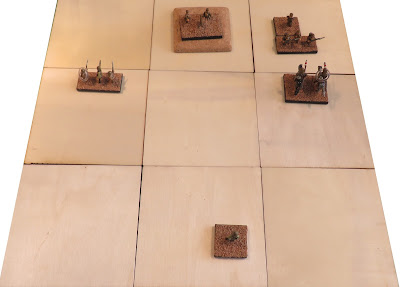











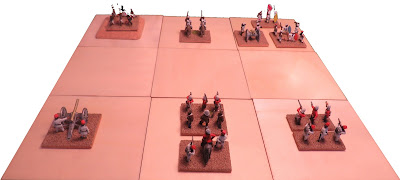



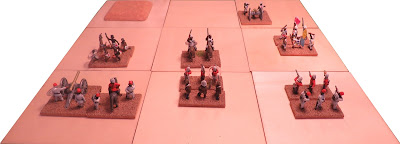


























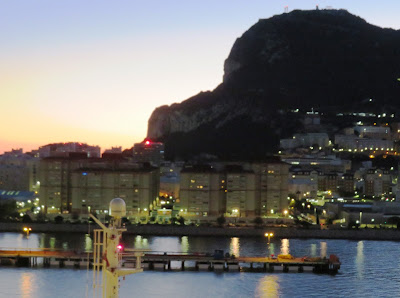

















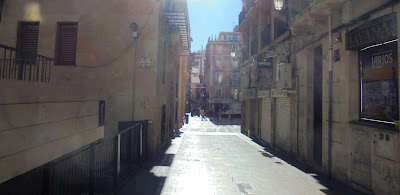




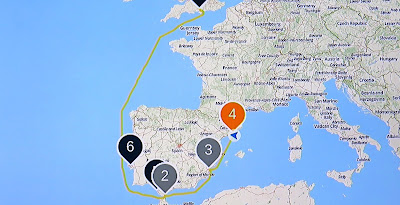






























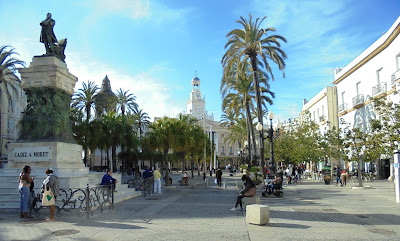











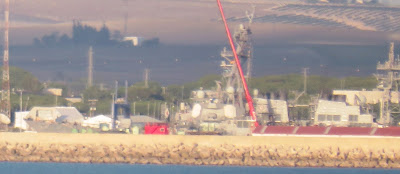

















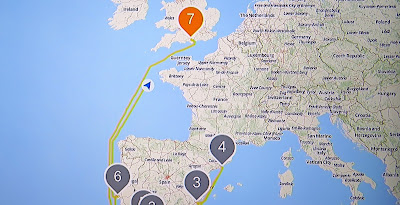

















.JPG)













